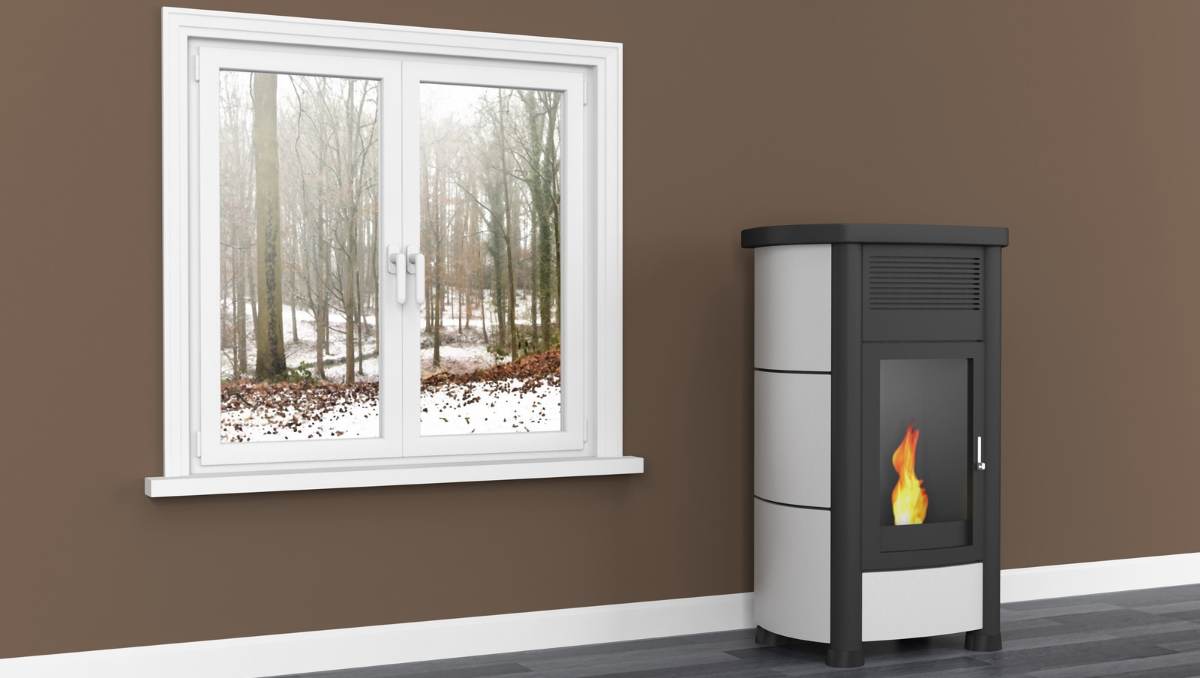This post contains affiliate links. See the affiliate disclaimer here.
Pellet stoves have become a popular alternative to traditional wood stoves and electric heaters due to their cost-effectiveness, efficiency, and environmental benefits. Understanding how a pellet stove works is important for homeowners looking to utilize this heating technology.
In this article, we will delve into the components and operation of a pellet stove, as well as the advantages of using one over other heating sources. We will also discuss maintenance and safety precautions to ensure the safe and efficient use of a pellet stove. By the end of this article, you will have a better understanding of how a pellet stove works and why it might be the right choice for your home.
The Components of a Pellet Stove
- A. Hopper
- B. Auger
- C. Combustion chamber
- D. Exhaust fan
- E. Heat exchanger
- F. Ash pan
The components of a pellet stove are essential to its operation, each working together to produce heat and distribute it throughout the room. The hopper stores the pellets, which are fed into the combustion chamber by the auger. The combustion chamber is where the pellets are burned, producing heat and waste gases that are expelled by the exhaust fan. The heat exchanger then distributes the warmth throughout the room, and the ash pan collects the residual ash.
Understanding the function of each component is important in maintaining the efficiency and safety of the pellet stove. By keeping each component clean and properly functioning, homeowners can ensure that their pellet stove continues to provide warmth and comfort for years to come.
The Pellet Stove Operation
A. Loading the hopper with pellets
B. Auger feeding pellets to the combustion chamber
C. Igniting the pellets
D. Combustion and heat production
E. Exhaust fan expelling waste gases
F. Heat exchange to distribute warmth
G. Disposal of ash residue
The operation of a pellet stove is relatively simple and straightforward. To start, pellets are loaded into the hopper, which automatically feeds them into the combustion chamber through the auger.
Once the pellets reach the combustion chamber, they are ignited by an igniter rod or hot surface igniter. The pellets burn and produce heat, which is circulated by the heat exchanger and blown into the room by a fan.
The exhaust fan expels waste gases through a vent, and the ash residue is collected in the ash pan. The stove can be adjusted to regulate the amount of heat produced and the speed at which pellets are fed into the combustion chamber. With proper use and maintenance, a pellet stove can provide a reliable and efficient source of heat for your home.
Advantages of Using a Pellet Stove
Using a pellet stove has several advantages over traditional wood stoves and electric heaters. One of the biggest benefits is cost-effectiveness. Pellet stoves are highly efficient, with an average heating efficiency of around 80%, which means they require less fuel to produce the same amount of heat.
They also have low operating costs since pellets are generally cheaper than other heating fuels. In addition to cost-effectiveness, pellet stoves are also environmentally friendly. Pellets are made from renewable materials, such as sawdust and wood chips, and they produce low levels of emissions compared to other fuels.
Pellet stoves are also convenient and easy to use, with automated features such as hopper and auger controls, temperature settings, and self-cleaning functions. Finally, pellet stoves offer a high degree of flexibility in fuel choice, as pellets can be made from a variety of materials, including wood, corn, and grasses. Overall, pellet stoves offer a cost-effective, efficient, and eco-friendly heating option for homeowners.
Maintenance and Safety Precautions
Maintaining a pellet stove is essential to ensuring its safe and efficient operation. One important aspect of maintenance is cleaning the stove regularly, including the hopper, auger, combustion chamber, and exhaust fan. Regular cleaning helps prevent blockages, maintain airflow, and prevent excess ash buildup.
Proper ventilation is also crucial in operating a pellet stove safely. Homeowners should ensure that their stove is properly vented to the outside and that the vent pipes are free of obstructions.
Additionally, pellet stoves should be placed on a heat-resistant surface and kept away from flammable materials. Regular inspections of the stove and venting system can also help identify potential hazards and ensure that the stove is operating safely.
By following these maintenance and safety precautions, homeowners can enjoy the benefits of a pellet stove while minimizing the risks of potential hazards.
Conclusion
In conclusion, a pellet stove is an excellent alternative to traditional heating methods, providing a cost-effective, efficient, and eco-friendly way to heat your home.
Understanding the components and operation of a pellet stove is crucial in maintaining its efficiency and safety. Proper maintenance, cleaning, and safety precautions are essential for safe and reliable operation. With its convenience, ease of use, and fuel flexibility, a pellet stove is an excellent investment for homeowners who want to reduce their heating costs and environmental impact.
Whether you are looking for an alternative to electric heating or a more eco-friendly way to heat your home, a pellet stove is an excellent choice that provides warmth and comfort for years to come.

